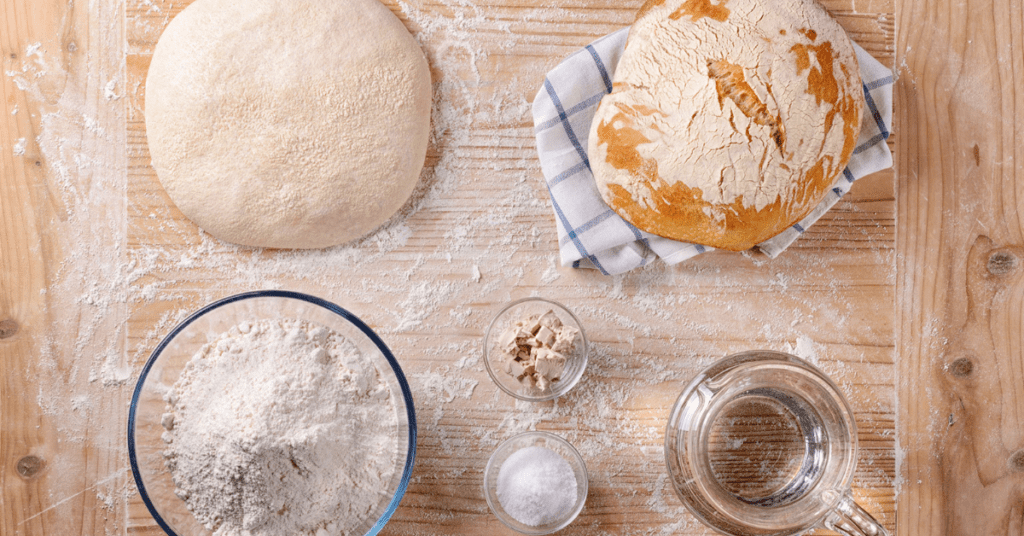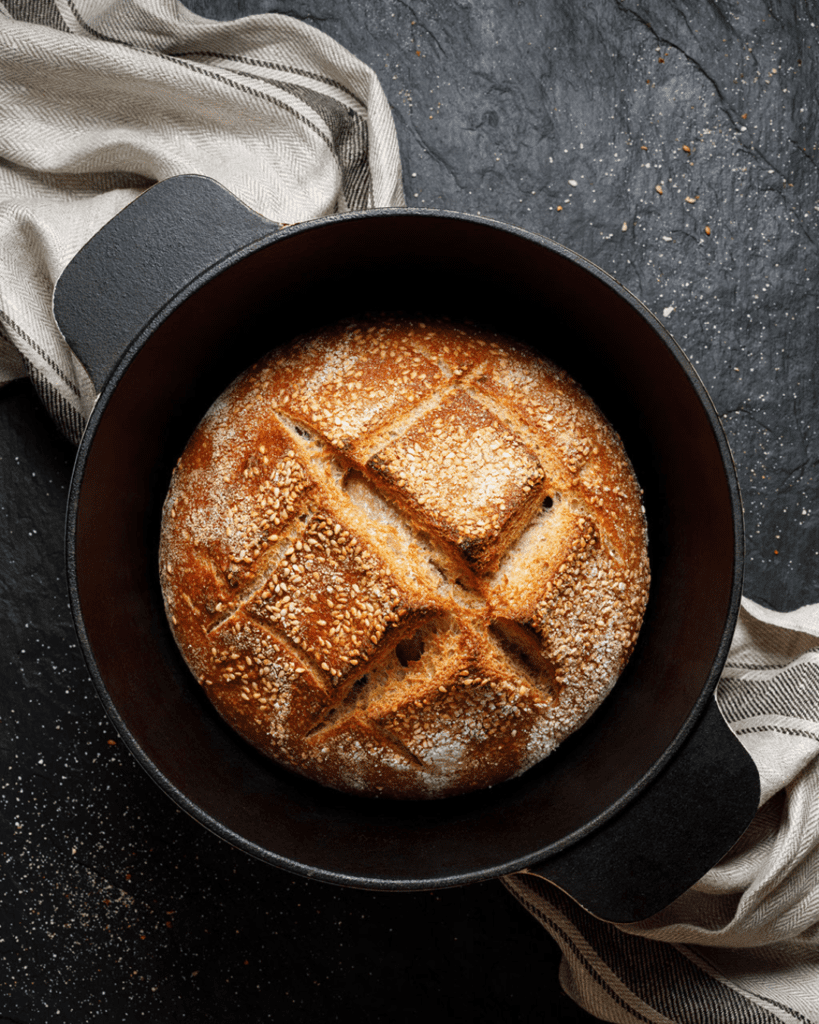Best No-Knead Bread for Your Homestead Meals
No-knead bread sometimes gets a bad rap. After all, with a nickname like “poor man’s bread,” it doesn’t exactly sound appealing. When you know the reason why it’s called that, it makes more sense (hint, hint, it’s because it uses very few ingredients).
Depending on who you ask, you may get a different story about how no-knead bread came into existence. A New York Times article from 2006 credits Jim Lahey and Mark Bittman with the amazing discovery. Others say Lahey and Bittman didn’t invent the basic recipe. They simply gave an ancient method of breadmaking a catchy name.
Regardless of how it started, no-knead bread can complement any homestead meal. They’re easy to make and literally melt in your mouth with some raw Jersey cow milk butter on top.
In this blog, we’ll explore:
- What is the point of no-knead bread?
- What ingredients are used in no-knead bread?
- Should you punch down no-knead bread?
- Why is my no-knead bread tough?
- What are the best no-knead bread recipes?
What is the point of no-knead bread?
No-knead bread is meant to equalize bread-baking for the masses. Not only does it require fewer ingredients, but it’s also so easy to make that even a child could do it.
Kneading bread properly requires devoting 10 to 12 minutes of hand mixing (or 8 to 10 minutes in a standard mixer). Most diehard “from scratch” bakers insist on kneading their bread dough by hand for a more thorough mixing process. Some even insist they can feel when the bread has been kneaded enough.
If you choose to knead by hand, the process requires pushing the dough down and then outward using only the heels of your hands. As you can probably imagine, your hands can get tired quickly, especially if you’re making more than one loaf of bread.
No-knead bread eliminates this timely (and sometimes painful) step.

What ingredients are used in no-knead bread?
Remember when we called it poor man’s bread earlier? One of the reasons for that is that no-knead bread uses just 4 basic ingredients: flour, salt, water, and yeast.
Instant yeast works best with no-knead bread recipes. If you don’t have any on hand, dry yeast works but may increase your dough fermentation period. Likewise, you can switch out yeast with a sourdough starter instead if you’d like to give your no-knead bread a unique flavor.
Many no-knead bread enthusiasts swear by baking no-knead bread in a Dutch oven for the best results. The theory is that Dutch ovens produce even heating and trap moisture, making some of the flakiest, tastiest bread you can imagine.
You can still make no-knead bread without a Dutch oven, so don’t panic if you don’t have one. We recommend any pot with a lid that’s rated for use in the oven.
Should you punch down no-knead bread?
Some people may wonder how you can make proper bread without “punching it down.” Kneading bread in some form or another develops the gluten that’s necessary for giving bread its structure. However, it’s not the only way to achieve this goal.
The trick to how no-knead bread works is its longer fermentation period. Most no-knead bread recipes require you to let the dough rise (covered) for 12 to 18 hours. You’ll know it’s ready when it doubles in size and is covered in air bubbles.
Even after the initial 12 to 18-hour rising period, you’re still not done letting it ferment. You’ll scrape it on a floured surface, fold and shape it, then allow it to rise (again, covered) for another 2 hours. Only then is it ready to bake without kneading the dough first.

Why is my no-knead bread tough?
One of the most common mistakes first-timers make with no-knead dough is overbaking, which can cause your bread crust to become tough and “chewy.” This less-than-desirable crust also happens with certain types of flour.
To correct overbaking, you can try two things. First, monitor the interior temperature and crust appearance. Once the inside of the bread reaches 200 degrees and the crust is a golden-brown color, the bread is done.
Second, make sure you’re using high-quality bread flour instead of all-purpose flour. Sometimes, all-purpose flour can make your dough too dry, which in turn makes the finished product a bit chewy.
What are the best no-knead bread recipes?
If this is your first time making no-knead bread, you’re probably interested in the most basic recipe you can find. We’ve got you covered. Here’s one we recommend.
Ingredients you’ll need:
- 3-1/2 cups bread flour
- 2 teaspoons salt
- ¾ teaspoon instant yeast
- 1-1/2 cups warm water (100-110 degrees F)
How to make it:
- Combine the flour, salt, and yeast in a large mixing bowl.
- Create a “well” in the center of the mixture, then add the water.
- Use your hands to stir the dough until it feels sticky (2 minutes).
- Cover the bowl lightly with plastic wrap and let stand until bubbles (12-18 hours).
- Spread flour on parchment paper, then place fermented dough on top.
- Fold the dough 3-4 times before forming it into a round shape.
- Cover with a clean dish towel or plastic wrap and let stand for 1-2 hours at room temperature.
- Place a Dutch oven in the oven at 450 degrees F for 30 minutes with the cover on.
- Remove the Dutch oven and place the bread dough inside, covering it with the lid.
- Remove the lid after 30 minutes. Allow continuing baking until the internal temps are 200 degrees F and the crust is golden brown.
As you become more skilled at making no-knead bread, you can add other ingredients, including herbs, to give your bread a unique flavor.
Have a no-knead bread recipe you’d like to share with our readers? We’d love to hear about it in the comments.
Happy baking!
Sources
- Fermentation: Humanity’s Oldest Biotechnological Tool. kids.frontiersin.org. Accessed December 12, 2022.
- How to Knead Dough. wikihow.com. Accessed December 12, 2022.
- No-Knead Bread, Revisited. nytimes.com. Accessed December 12, 2022.
- The Women Erased From the Story of No-Knead Bread. eater.com. Accessed December 12, 2022.
- What Is a Dutch Oven – and How Do You Use It? goodhousekeeping.com. Accessed December 12, 2022.
In our kitchen, we only use cultures from Cultures for Health.
Get yours here and start culturing today.
Popular Articles
Newsletter
Get signed up to get latest updates and new information from the Jersey Milk Cow!
This site uses Akismet to reduce spam. Learn how your comment data is processed.












Leave a Reply